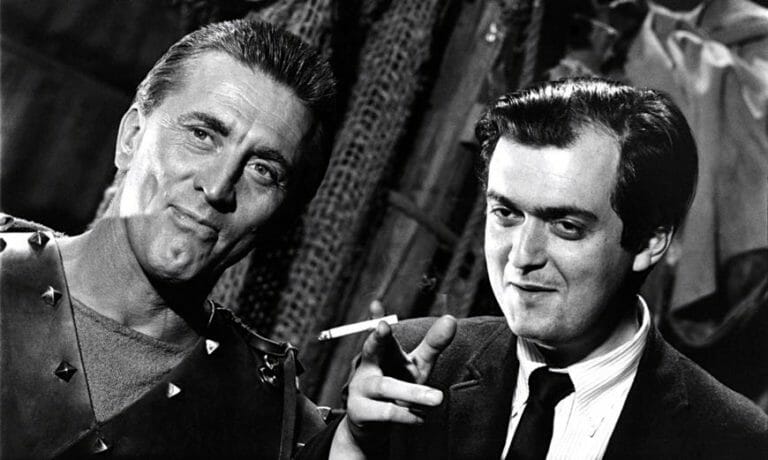Sign up for the
TSL Newsletter
and get $50 off Final Draft 12
By Martin Keady · January 27, 2015

So all-encompassing is Stanley Kubrick’s influence on cinema that he is sometimes described as “the Shakespeare of Cinema.” The comparison is merited. Just as Shakespeare was a master of comedy, history and tragedy, so Kubrick excelled in many genres. Indeed, a number of his films (including 2001, Spartacus and Doctor Strangelove) are arguably the finest examples of their genre. In his long career, Kubrick made relatively few films (only 13 features in more than 45 years), but almost all them were masterpieces, as this list is his Top 10.
10. LOLITA (1962)
Lolita is arguably more important in terms of its influence on Kubrick’s entire career than as a film in its own right. Like most adaptations of great novels (and Nabokov’s Lolita is a contender for the finest novel of the 20th century), it is not as good as its source material: such were the restrictions on what could be shown on screen at the time the film was made, it could only hint at the illicit subject matter of the novel. Nevertheless, despite its obvious limitations, Lolita was a major influence on Kubrick for two reasons: first, it marked his move from realism to satire, the genre that he would ultimately make his own; and, secondly, it marked his departure from America (and the Hollywood studio system) to England, where he would spend the rest of his life and where he could create the “other worlds” (wondrous, self-contained worlds, like all the greatest art) that his subsequent films would become.
2. PATHS OF GLORY (1957)
Speaking of humanity (not a trait that many immediately associate with Kubrick), Paths of Glory is his most human, and humane, film. Based on the real-life story of the execution for cowardice of four French soldiers during World War One, it is quite simply one of the greatest war movies ever made, not so much for the battle scenes (although the famous tracking shot of Kirk Douglas’s Colonel traversing the trenches is justly revered by directors, including Steven Spielberg) as for its depiction of the institutional madness of war, and indeed all military life: the men are chosen at random from their disgraced battalion, and shot as a warning to the others. The final scene of the film, in which the fatigued survivors of the battalion listen to a captured German girl sing a haunting song, is genuinely tragic: unaware that they are about to be sent back to the front (and their almost certain slaughter), they enjoy this brief, blissful interlude from the savagery of war, and life.
1. 2001: A SPACE ODYSSEY (1968)
In the adverts for the recent re-release of 2001 (which was neatly timed to coincide with the release of his own space epic, Interstellar), Christopher Nolan, who is often described as Kubrick’s heir, or even a post-modern Kubrick, said of 2001 that it is “pure cinema.” It is an accurate description. Indeed, if only one film could be preserved in a time capsule or space rocket for the future, 2001 might be the best choice, because no other film tells (or even attempts to tell) the entire history of humanity. The famous cut at the end of the first sequence, which takes us from the stone age to the space age in a split second, is probably the most famous single cut in cinema, and the quintessential example of Kubrick’s genius. The film not only looks incredible (its special effects remain unsurpassed, nearly five decades on) but is incredible, not least in its story-telling, combining several stories (the Dawn of Man, HAL the murmuring, but murderous computer and the final full-on sensory assault that takes us from savagery to civilization, and from youth to old age) in one. I have seen it many times and never failed to be stunned by it, but the most moving occasion was the night before my first child was born: watching it on a grainy TV in a riverside London hospital, I was transported and transformed. It was the only film that could begin to approach the magnitude of an actual birth.
Kubrick is one of the very greatest directors. It is only in his first couple of films, when he was struggling to find his way as a director, and his final film, Eyes Wide Shut (or Eyes Wide Shite, as it is often known), that he failed to make movies that were simultaneously visually stunning and deeply thought-provoking. His “Top Ten” is a match for that of any other director, and in its sheer breadth (encompassing everything from sci-fi to satire) it may be unsurpassed.